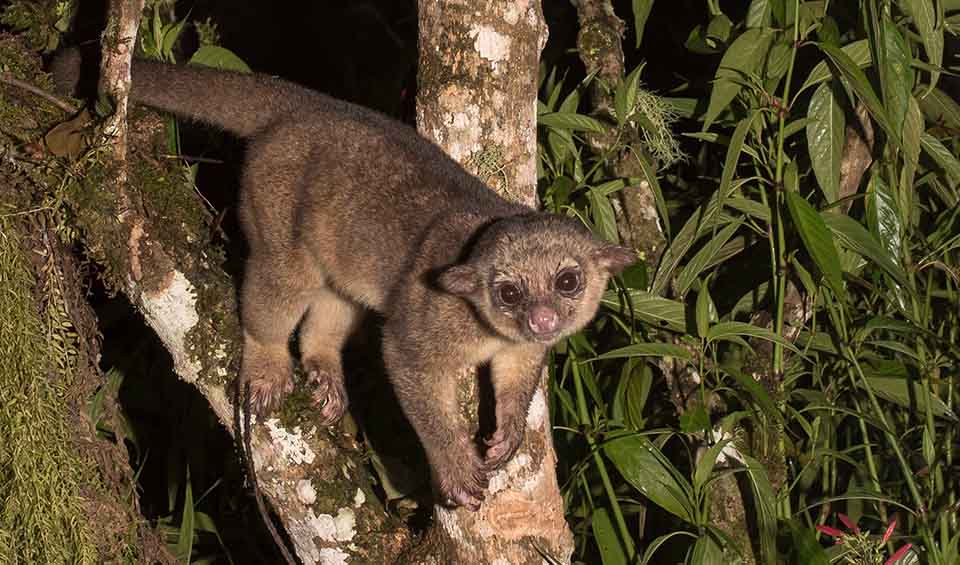Potos – Kinkajou
Has a spooky nickname, “La Llorona,” meaning crying woman in Spanish due to their noisy barks, hisses, and high-pitched squeaks
The Kinkajou (Potos flavus), also known as the “honey bear,” is a small, arboreal mammal native to the tropical forests of Central and South America. Despite its bear-like appearance and nickname, the Kinkajou is more closely related to the raccoon family (Procyonidae). This nocturnal creature is renowned for its versatility in the treetops, facilitated by its remarkable anatomical adaptations and dietary preferences.
Kinkajous exhibit a notable variation in coat color, which ranges from wood brown and yellowish-tawny to tawny olive across their geographical range and throughout different seasons. This coloration provides camouflage within the forest canopy, allowing them to blend seamlessly with their surroundings. The underside of the Kinkajou features buff, brownish-yellow, or tawny fur, further aiding in their concealment from predators.
One of the most distinctive features of the Kinkajou is its prehensile tail, which acts as a fifth limb, aiding in balance, locomotion, and manipulation of objects within their environment. This tail can also be a cozy blanket, wrapping around the sleeping Kinkajou to provide warmth and security. Additionally, their feet are uniquely adapted to support their arboreal lifestyle, capable of turning backward to facilitate movement in any direction along tree trunks and branches.
Kinkajous are primarily frugivorous and eat mainly fruits such as apples, bananas, figs, melons, mangos, and grapes. This diet positions them as vital seed dispersers within their habitats, contributing to the regeneration of tropical forests. By consuming fruits and excreting the seeds in different locations, Kinkajous aids in the spread of various plant species, promoting biodiversity and forest health.
As nocturnal animals, Kinkajous spend their days in the seclusion of tree hollows or dense foliage, emerging at night to forage. They often follow the same routes during their nightly excursions, a behavior that may be attributed to their territorial nature and the memorization of fruitful foraging paths.
Species in this genus
Kinkajou
Has a spooky nickname, “La Llorona” meaning crying woman in Spanish due to their noisy barks, hisses, and high-pitched squeaks


